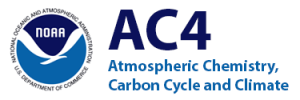- Year Funded: 2013
- Principal Investigators: John Seinfeld (California Institute of Technology)
- Programs: AC4 Funded Project
- Emissions
- Google Scholar Link
The goal of this proposed research is to develop a next-generation atmospheric OA model, adapt it for use in a 3-dimensional atmospheric model, implement the model into the CMAQ model, and analyze the sources and fate of OA over the Los Angeles Basin, against the CalNex data base. The proposed work has two broad goals: (1) Update the organic aerosol (OA) treatment of the most up-to-date publicly released version of CMAQ (version 5.0) to include the Statistical Oxidation Model (SOM); and (2) Use the updated version of CMAQ to analyze the sources and fate of OA in the Los Angeles Basin based on CalNex airborne and surface measurements. The analysis of Los Angeles OA will address the following issues: 1. Attempt to reconcile the seemingly contradictory results of Bahreini et al. [2012] and Gentner et al. [2012] concerning the relative importance of gasoline and diesel emissions in SOA formation. 2. Determine the relative contributions of anthropogenic vs. biogenic sources of OA. 3. Assess, to the extent possible, the accuracy of the California Air Resources Board emission inventory with respect to prediction of OA.


